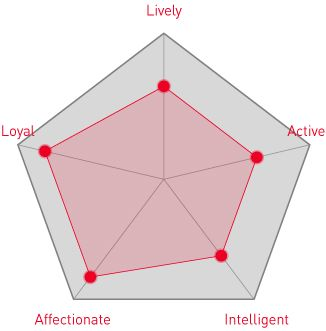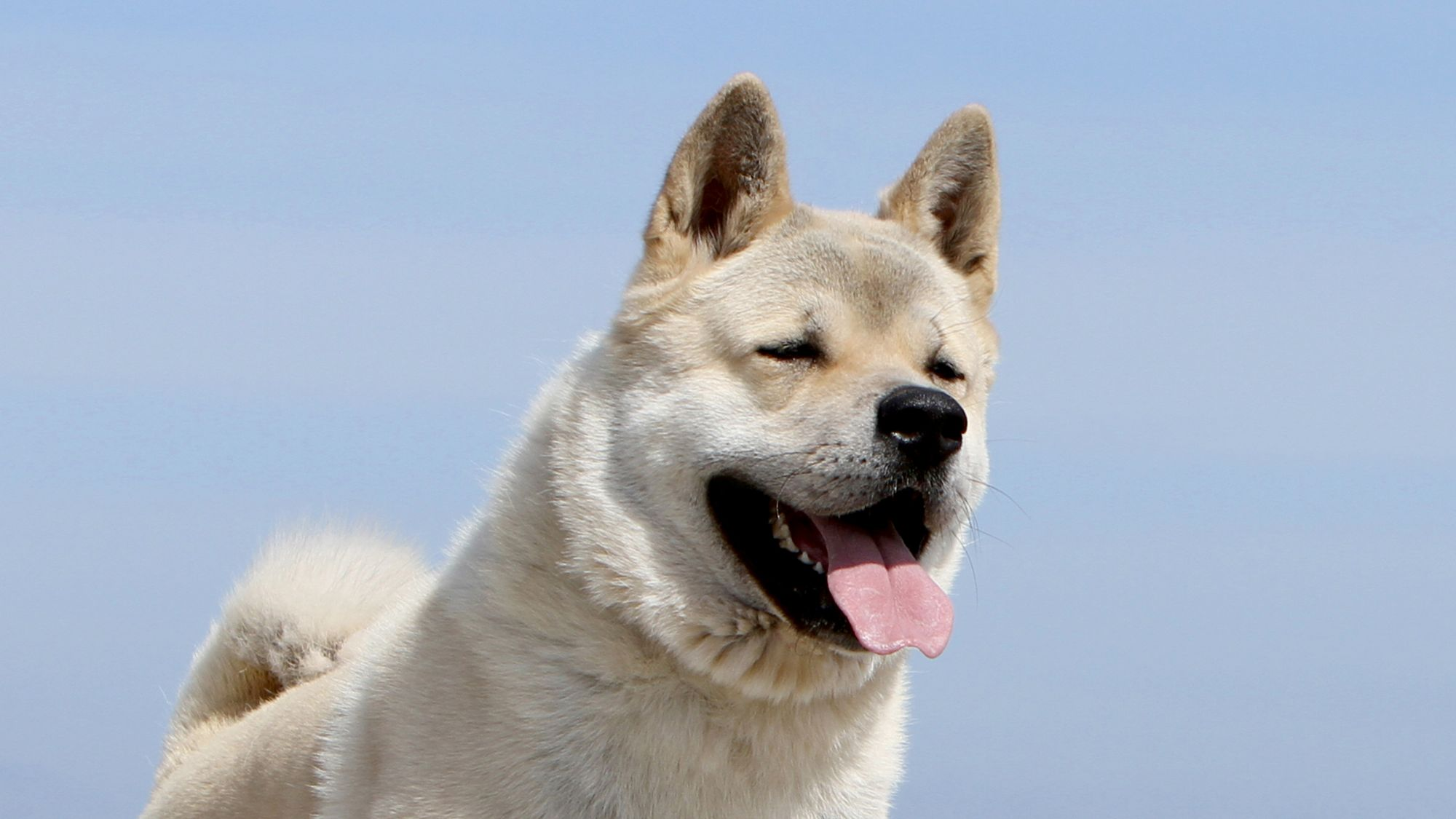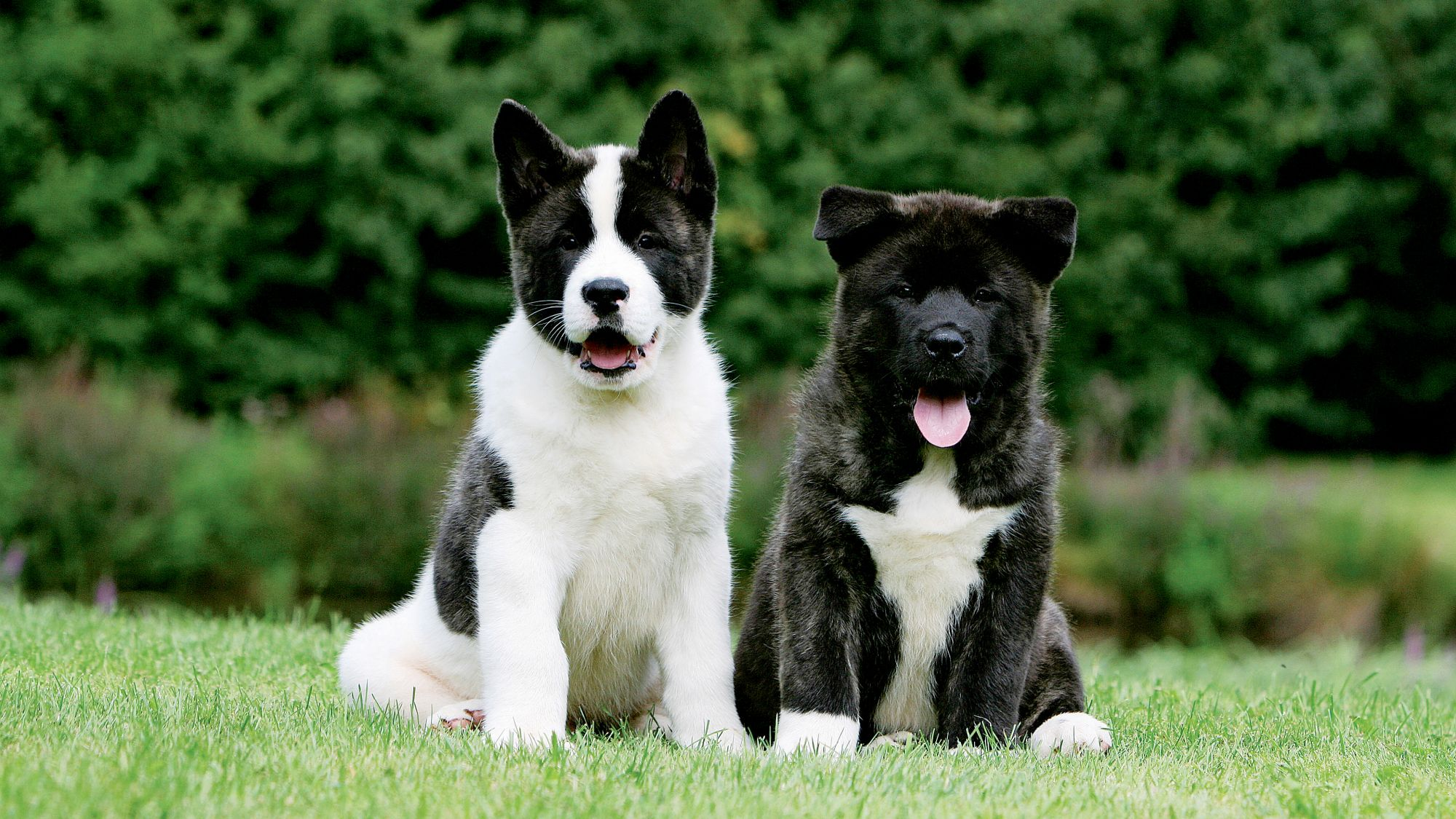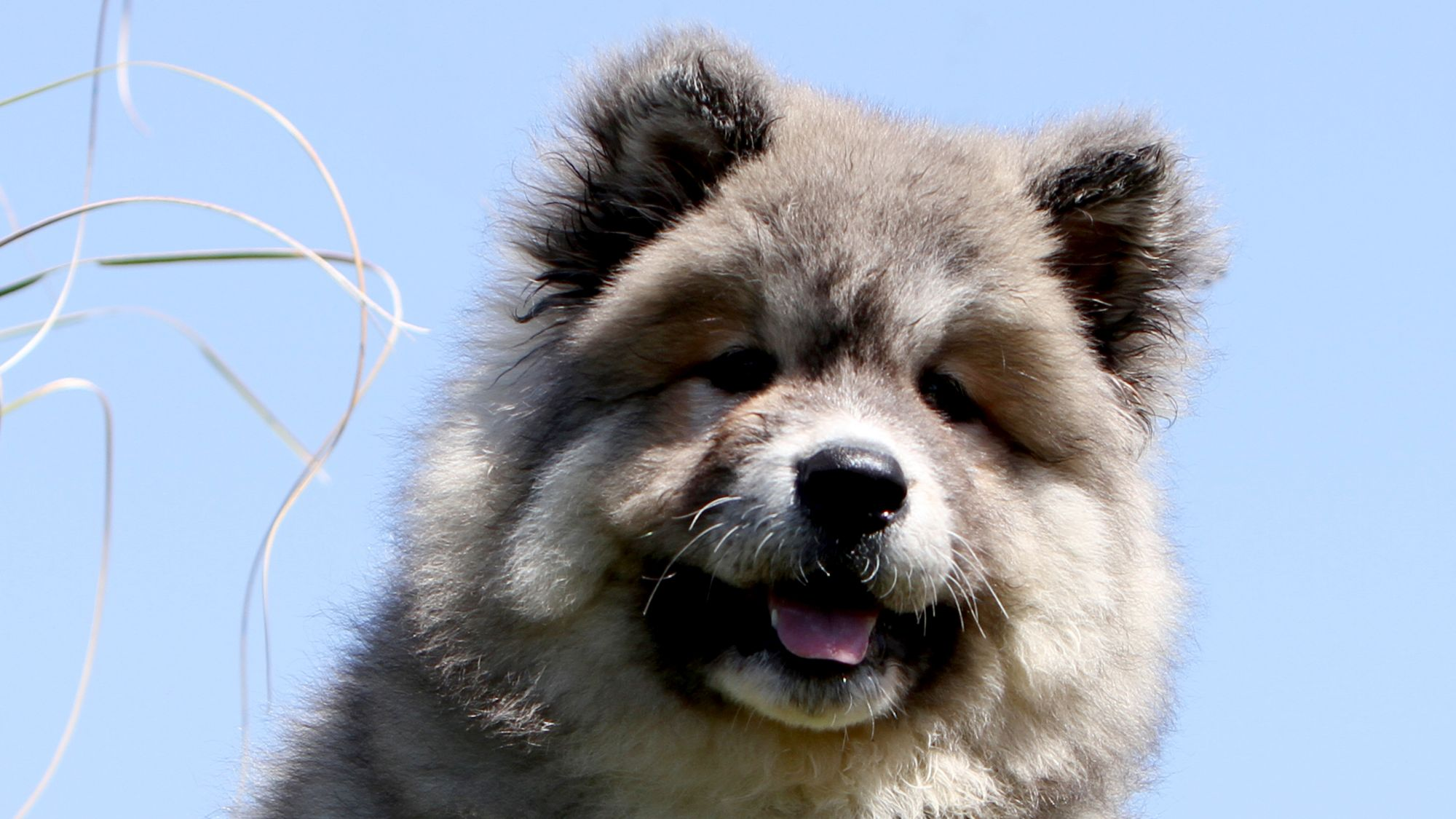
Let's talk American Akitas
A handsome, headstrong breed with ancient Japanese heritage, the American Akita is a heavy-boned, muscular dog whose striking, noble looks and somewhat dominant personality are guaranteed to make an impression. Renowned for their fearlessness and deep sense of loyalty, American Akitas have a long history as both guardians and sporting dogs. Though aloof and standoffish around strangers, once an American Akita bonds with their family, the latter can expect a devoted lifelong companion ready to follow them anywhere – and we do mean anywhere.Official name: American Akita
Other names: None
Origins: Japan

| Drooling tendencies |
|
Warm weather? |  |
| Shedding level |  |
Suited to apartment living? |  |
| Energy Level (high, low, medium)* | Medium | Family Pet?* |
 |
| Compatibility with other pets | Can stay alone?* |
* We advise against leaving pets alone for long stretches. Companionship can prevent emotional distress and destructive behaviour. Speak to your veterinarian for recommendations.
Every pet is different, even within a breed; this snapshot of this breed specifics should be taken as an indication.
For a happy healthy and well-behaved pet, we recommend educating and socializing your pet as well as covering their basic welfare needs (and their social and behavioral needs).
Pets should never be left unsupervised with a child.
Contact your breeder or veterinarian for further advice.
All domestic pets are sociable and prefer company. However, they can be taught to cope with solitude from an early age. Seek the advice of your veterinarian or trainer to help you do this.


| Baby age | Birth to 2 months |
| Puppy age | 2 to 15 months |
| Adult age | 15 months to 5 years |
| Mature age | 5 to 8 years |
| Senior age | from 8 years |

1/7
Get to know the American Akita
All you need to know about the breed
The bold and brave American Akita is a stunning breed whose individuality and confidence are to be admired. Fiercely protective of their family, these powerful dogs are natural guardians who rarely back away from a challenge. But despite their somewhat intimidating public demeanour, the American Akita has an entirely other side reserved uniquely for their loved ones. Playful and affectionate in their “private life”, an American Akita wants nothing more than to be by their family’s side, wherever that may be.
Though a one-family kind of dog, the American Akita is very social within their home environment and most content when included in daily activities. Though not prone to barking, the American Akita is quite vocal, producing an impressive range of grunts, mumbles, moans, etc. And another unique American Akita trait is known as mouthing, wherein they carry various items around, from toys to shoes to your hand. The latter isn’t aggressive behaviour, but rather a means of telling their owners, ‘Let’s go for a walk’ or ‘Come see this’.
Despite the affection and loyalty that the American Akita showers on their family, this breed can be stubborn and determined both in and outside the home. As such, confident, experienced dog owners capable of establishing their Alpha position will fare best. However, anyone willing to take the time necessary to properly train and socialise an American Akita will be rewarded with a devoted, loving pet-owner relationship.

2/7
2 facts about American Akitas
1. Some angels have fur
It is widely held that Helen Keller was the first American to import an Akita from Japan to the U.S. While on a trip to the breed’s native country, Keller was shown a statue of a famous Akita – Hachiko – renowned for his lasting loyalty to his owner long after the latter’s passing. When the Japanese heard of Keller’s desire to own one, they offered her a puppy, which she named Kamikaze-go. After his early passing from distemper, Keller wrote that Kamikaze was “an angel in fur”.
2. Fear? Never heard of it.
Two uncontested behavioural traits of the American Akita are their courage and loyalty. In fact, these were once put to the test when London Zoo zookeepers needed a solution to help them raise an orphaned Sumatran Tiger cub. Who did they enlist? An American Akita puppy! With fearlessness that enabled the puppy to play with the tiger cub and a protective instinct that helped the two forge a strong bond, the American Akita puppy pulled off its mission with flying colours.
History of the breed
The American Akita’s origins can be traced back to the Akita province of Japan where, in the 17th century, the breed’s ancestors, the Matagi-Inu, were used for hunting large game and guarding royalty. By the 19th century, dogfighting had become popular and many Matagi-Inu were crossbred with foreign breeds like the Tosa and Mastiff to produce bigger, more aggressive dogs dubbed the Dewa line.
Japan prohibited dog fighting in 1908, but World War II soon decimated the Akita population. Fortunately, many American GIs in Japan fell for the breed and took theirs back home, mostly Dewa - German Shepherd and Fighting dog strains.
In 1956, the Akita Club of America was formed and, in 1973, the American Kennel Club officially recognised the Akita, closing their stud book to further imported Akitas (they didn’t recognise the Japanese Kennel Club). Since the majority of imported dogs were of the Dewa lines, these made up the resulting foundation stock of the American Akita. The AKC later recognised the Japanese Kennel Club and reopened the stud book, but the differences between the American and Japanese Akitas were already established. Years of debate ended in 2006 when the American type was officially named the American Akita.

4/7
From head to tail
Physical characteristics of American Akitas
1. Ears
Flöt en ekki þung eyru hanga niður beggja vegna höfuðsins
2. Feldur
Stuttur, þéttur feldur yfir vatnsheldum undirfeldi
3. Fur
Feldurinn getur verið svartur, súkkulaðibrúnn eða gulur, allt frá rjómagulum upp í rauðleitan
4. Skott
Langt skottið er ofarlega og er stöðugt á iði, stundum iðar jafnvel allur líkaminn.
5. Leggir og hryggjarsúla
Hlurfallslega vel vaxinn og gott jafnvægi á milli leggja og hryggjarsúlu.

5/7
Things to look out for
From specific breed traits to a general health overview, here are some interesting facts about your American Akita

6/7
Caring for your American Akita
Grooming, training and exercise tips
Weekly brushing, regular nail trimming and ear cleaning, and a bath every three months or so will suffice in terms of grooming your American Akita. That said, you may want to invest in a good vacuum cleaner since these dogs shed – a lot – and blow their coats twice a year. While not a highly active breed, American Akitas should get at least a half hour to an hour’s worth of exercise each day in addition to their favourite pastime – playing! The American Akita benefits enormously from a varied routine, which will both keep them mentally and physically stimulated and help curb any undesirable behaviours that might result from boredom. The American Akita is a dominating breed that is all too ready to take charge of things - and you. Extensive, early socialisation and firm but loving training given by an experienced trainer will ensure an American Akita learns the best canine manners.7/7
All about American Akitas
When considering an American Akita as a family pet, it is recommended to start with a very young puppy who can be raised alongside small children and other pets. American Akitas tend to be territorial, so exposing them to other members of the family from the earliest age will help ensure their comfort - and yours. As with any breed, dogs should always be supervised when kids are around - and vice versa.
Given their strong prey drive and same sex aggressivity with other dogs, American Akitas are best as only-pets. In addition, they do not always make good candidates for dog parks and should be kept on the lead when out and about.
Read more on this topic


How to adopt a dog

Things to consider before getting a dog
Sources
1 - Veterinary Centers of America https://vcahospitals.com/
2 - Royal Canin Dog Encyclopaedia. Ed 2010 and 2020
3 - Banfield Pet Hospital https://www.banfield.com/
4 - Royal Canin BHN Product Book
5 - American Kennel Club https://www.akc.org/